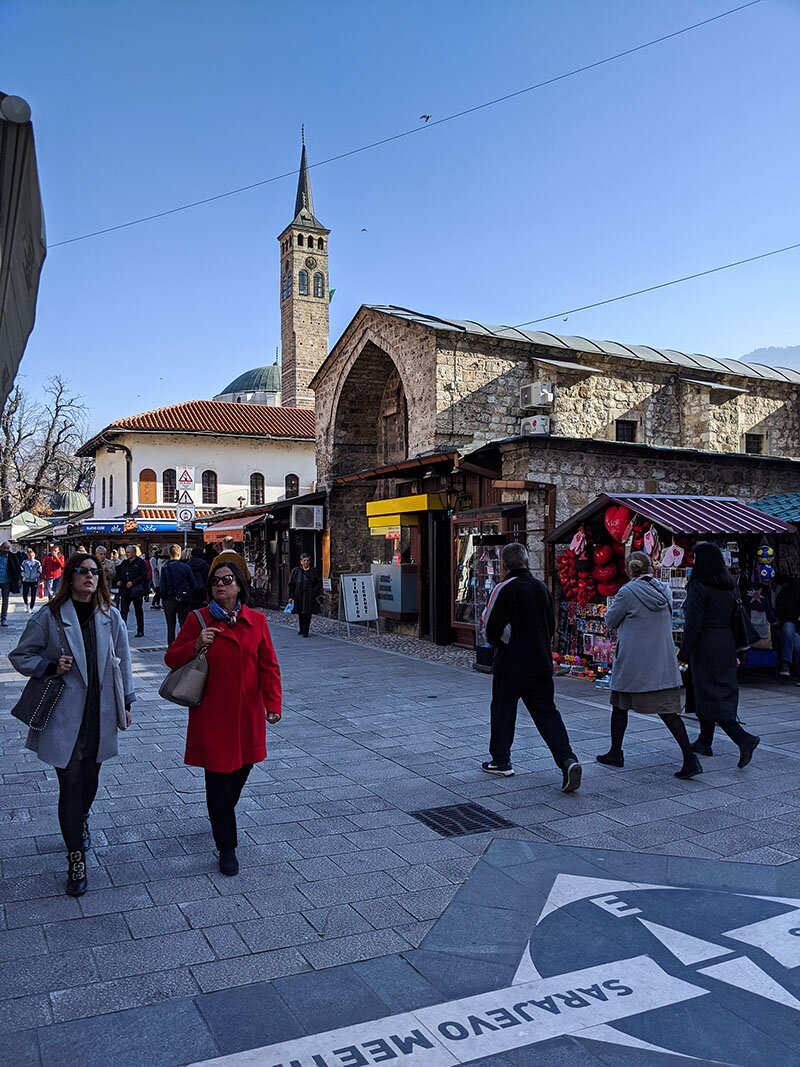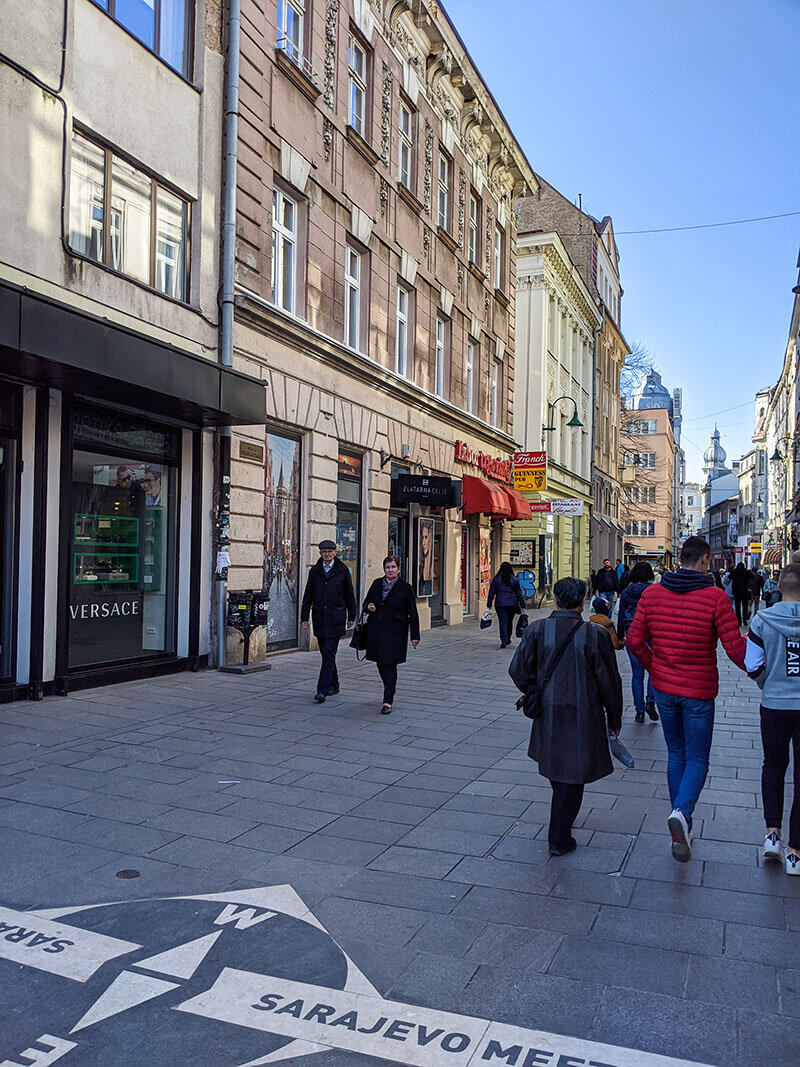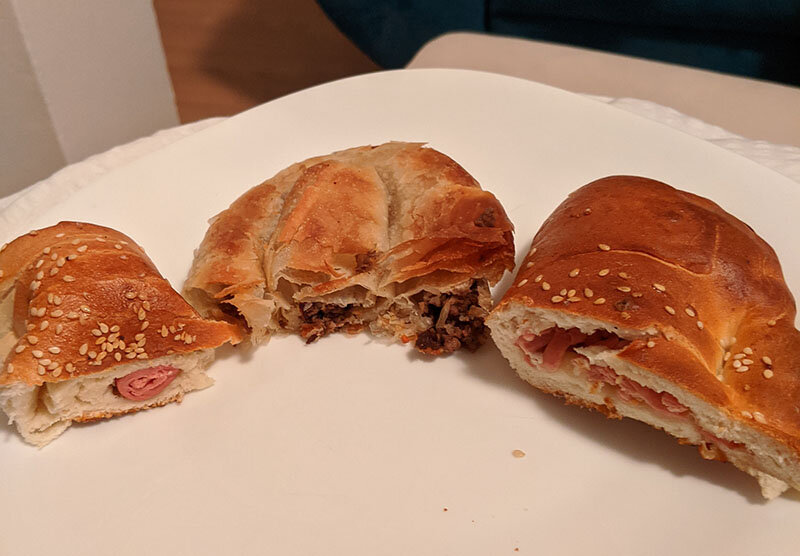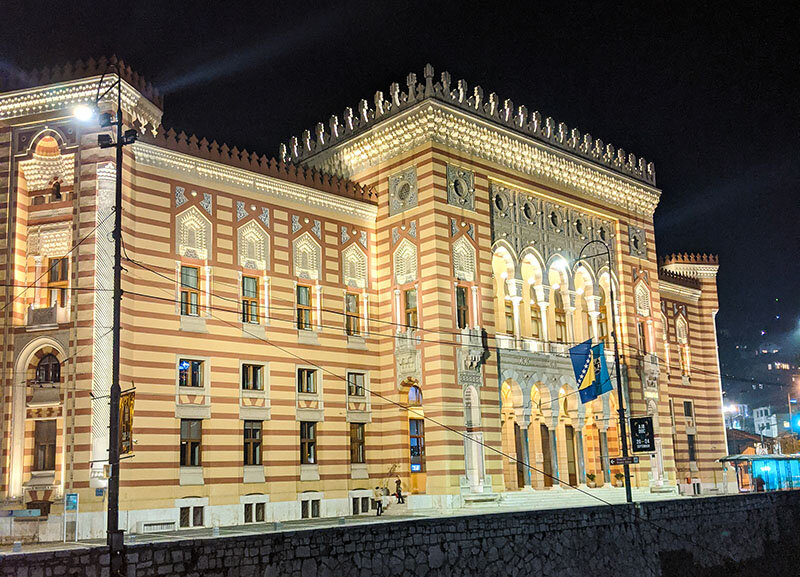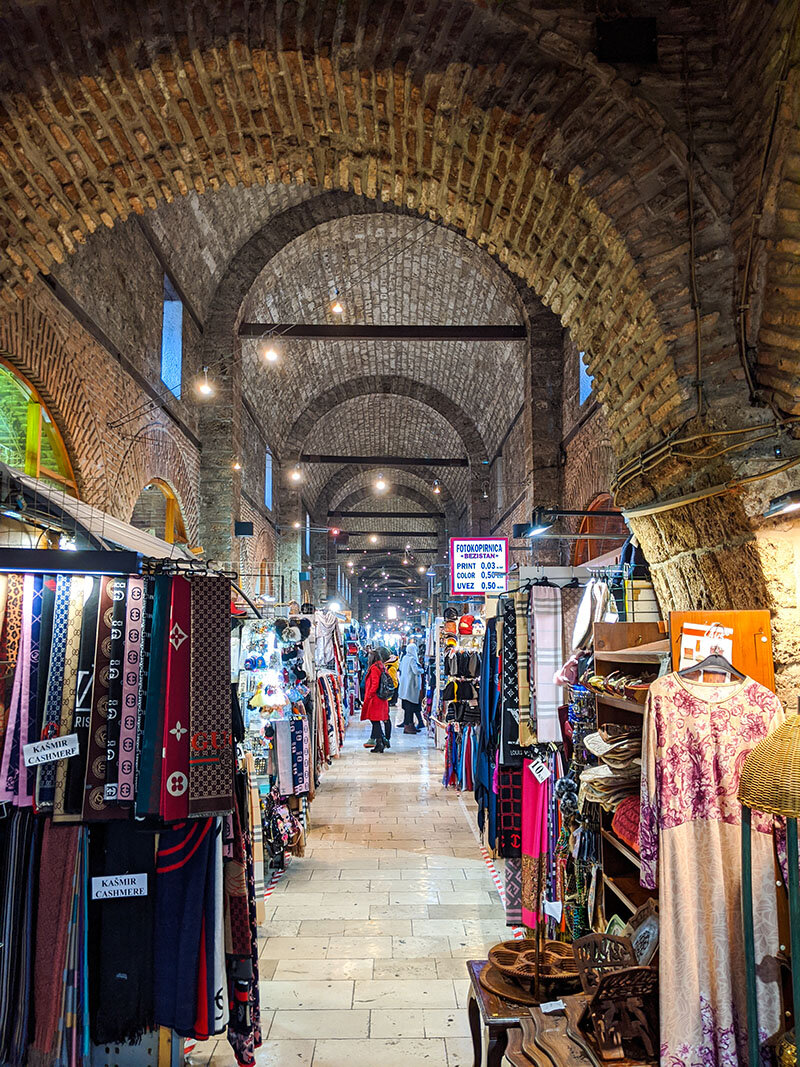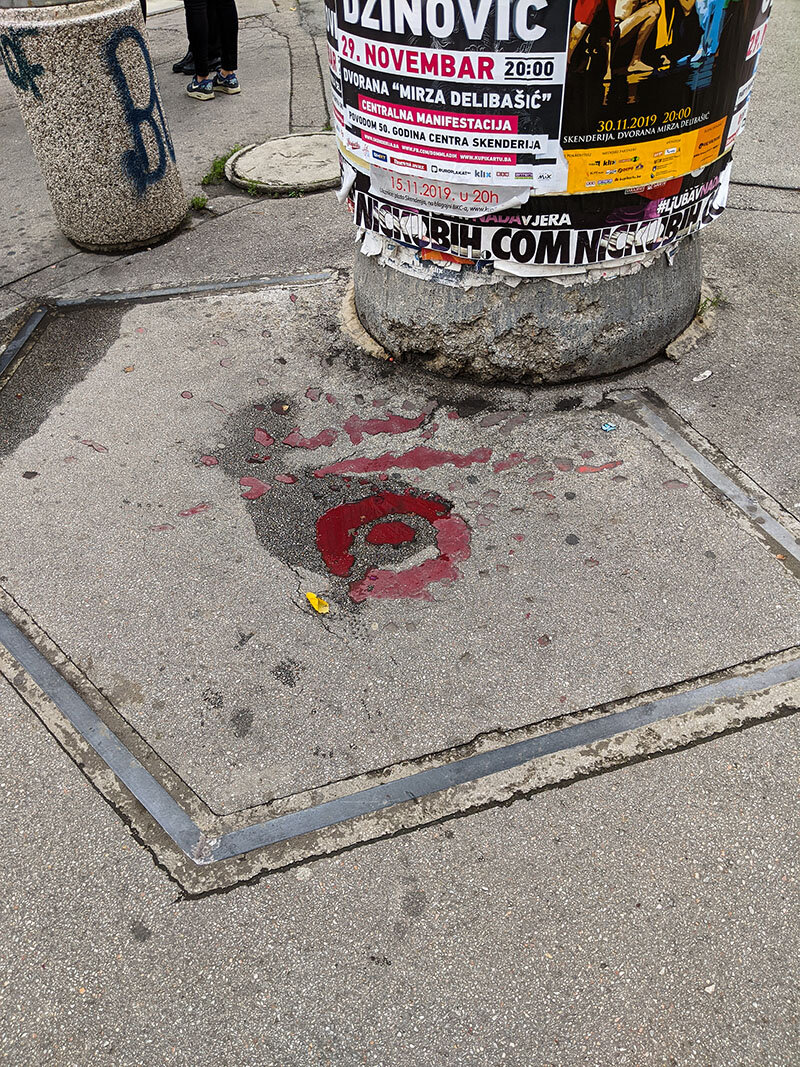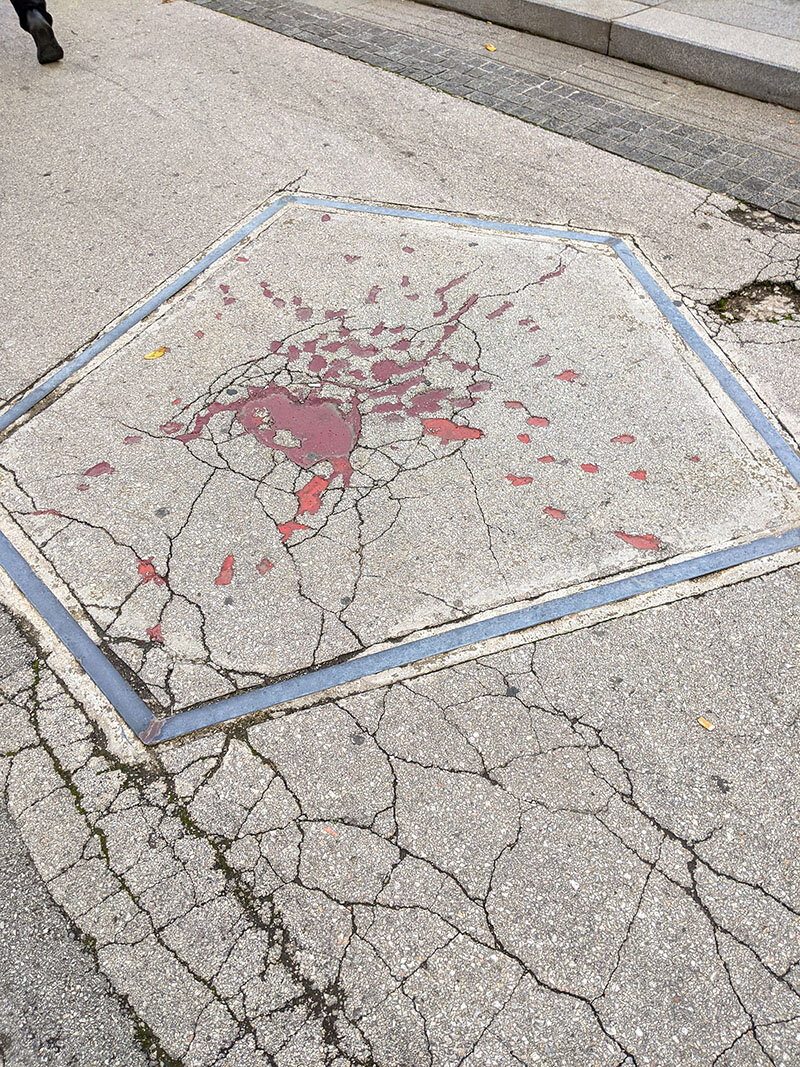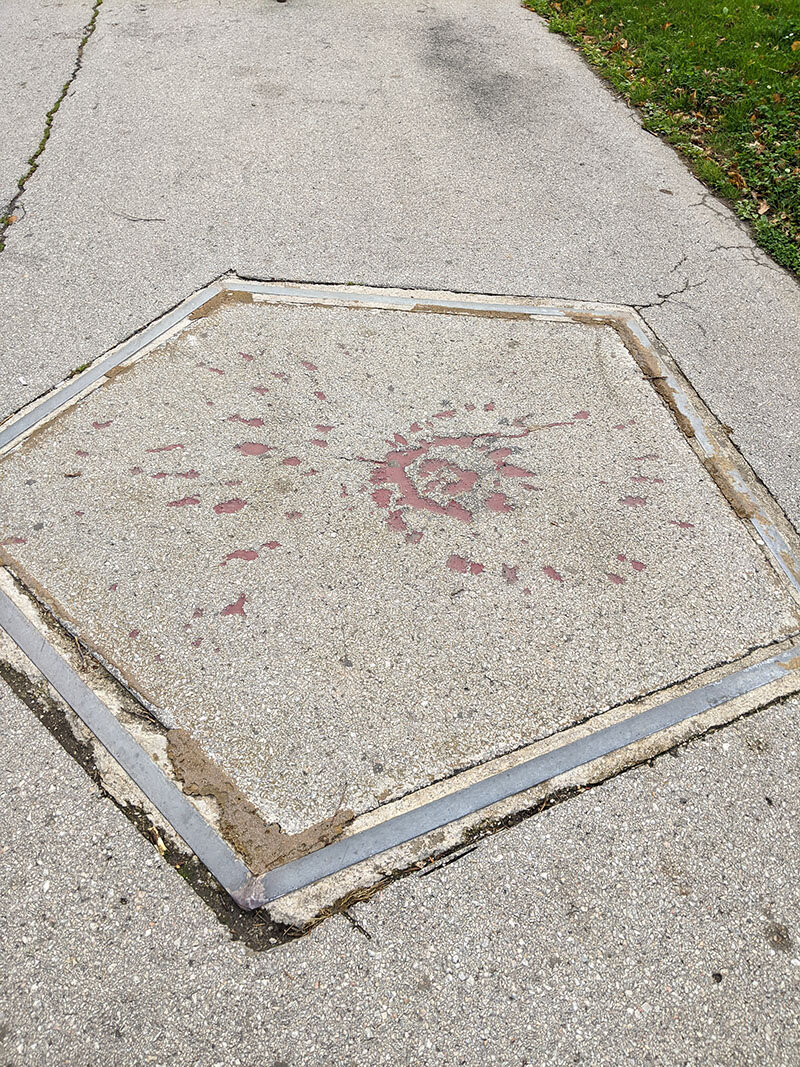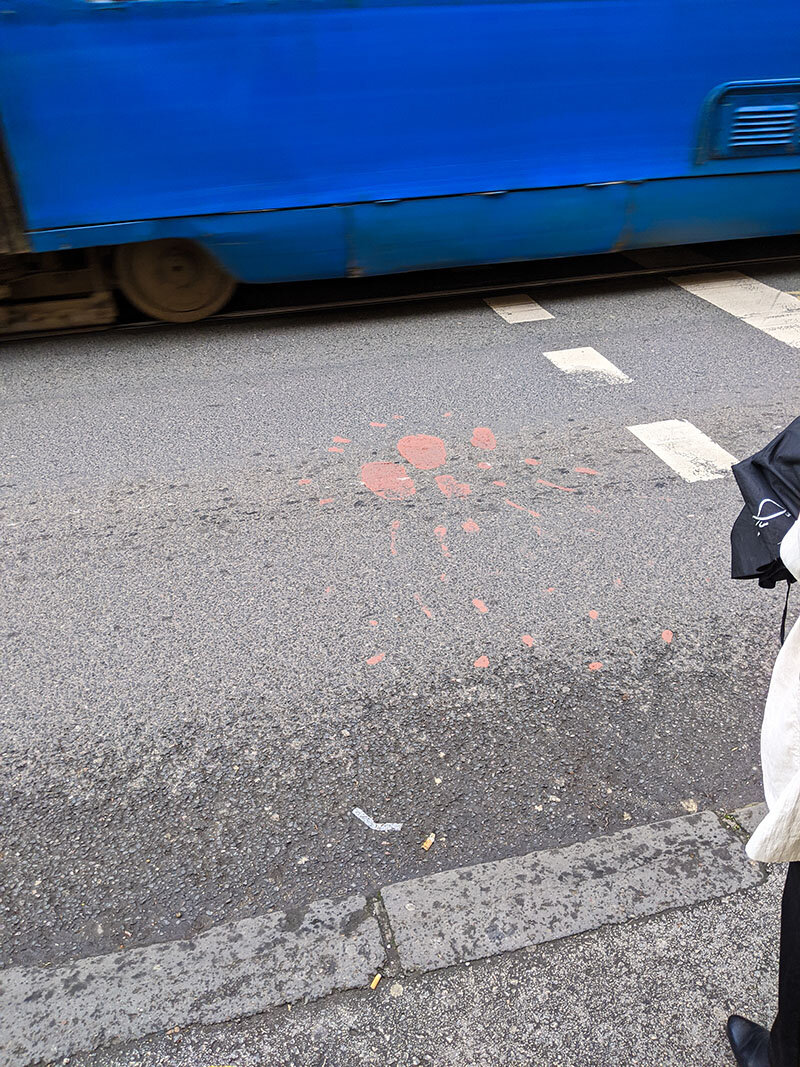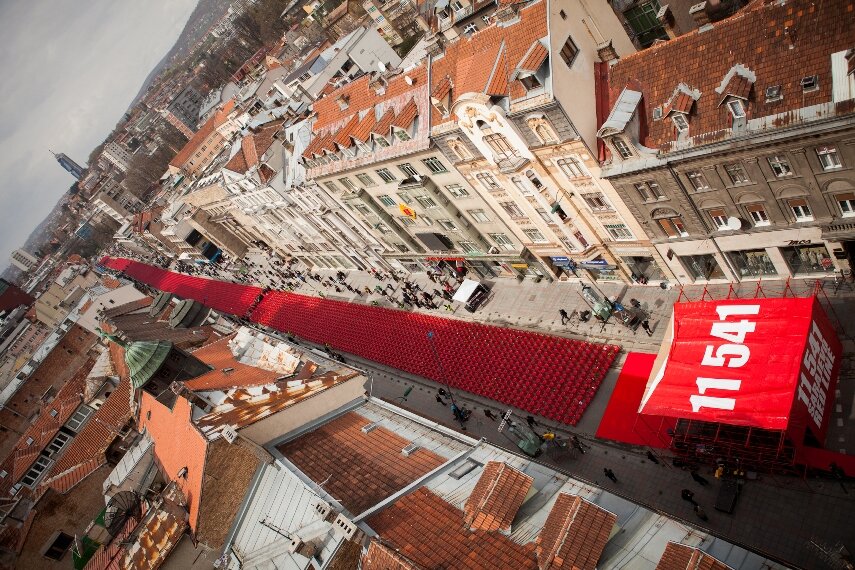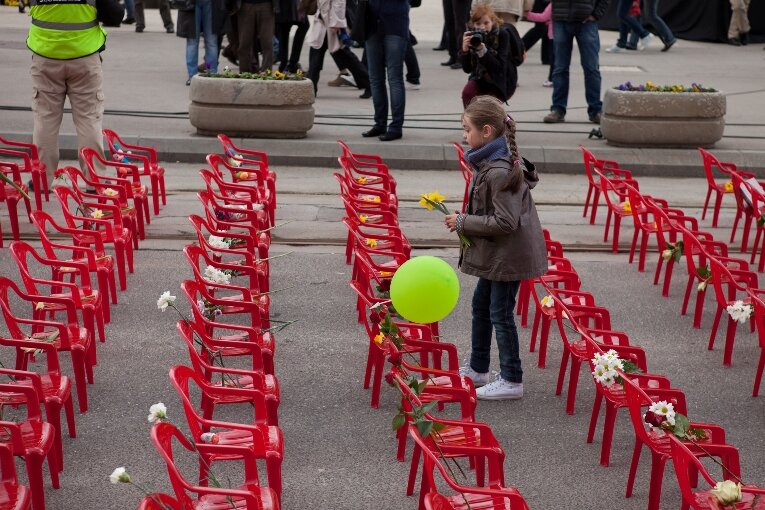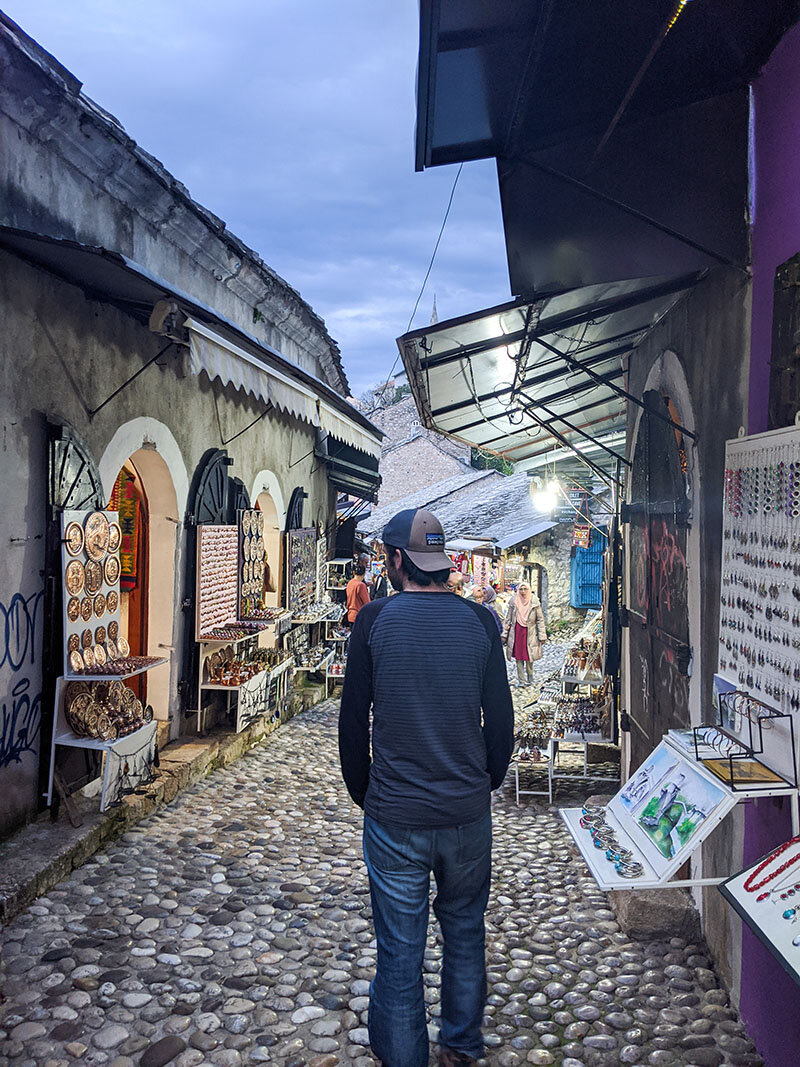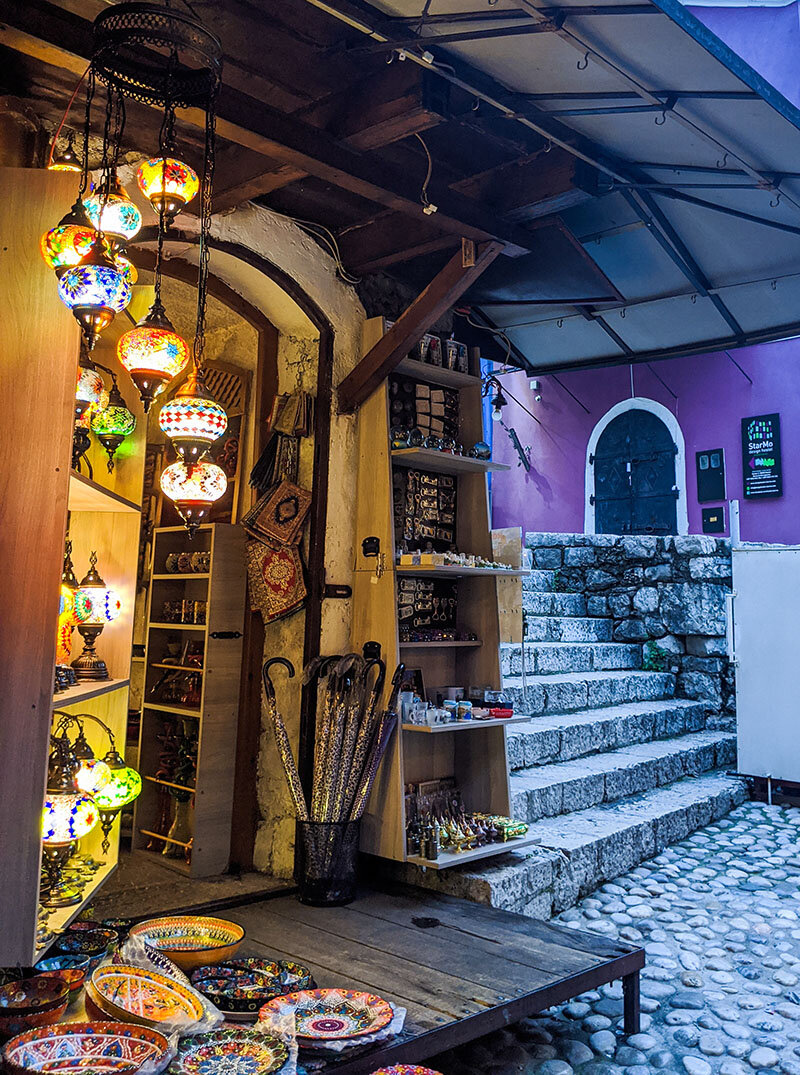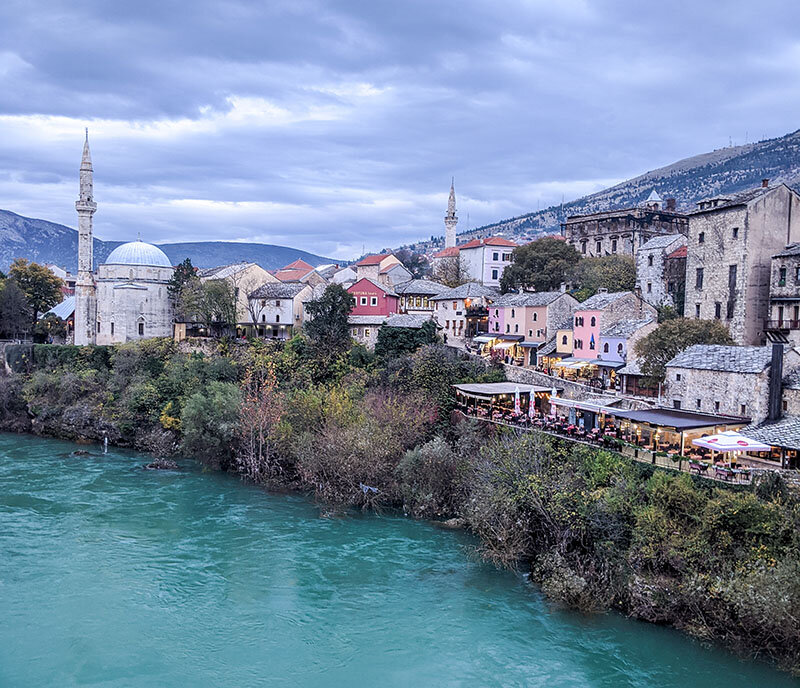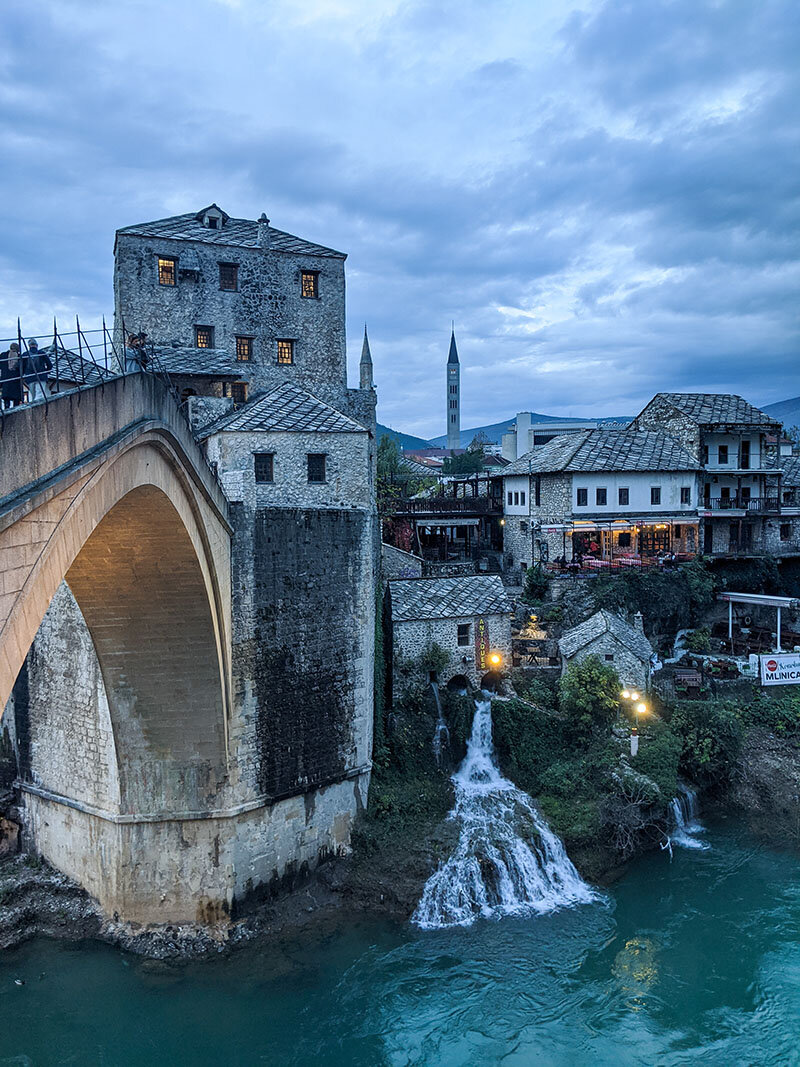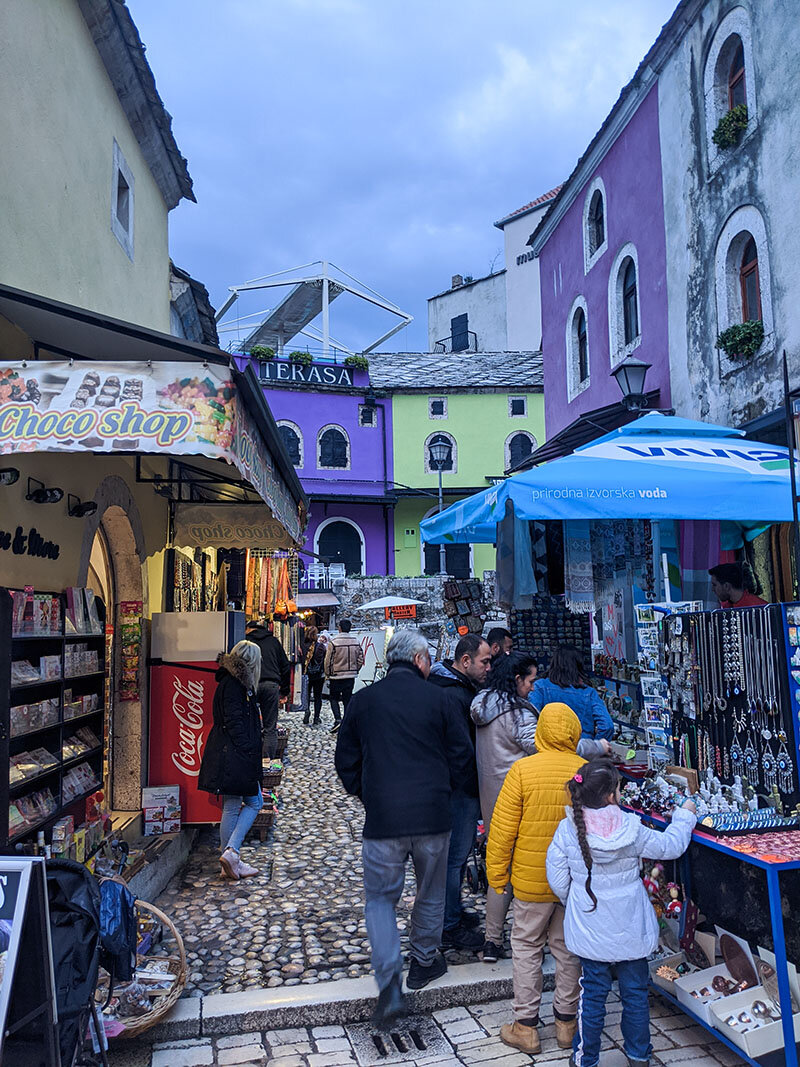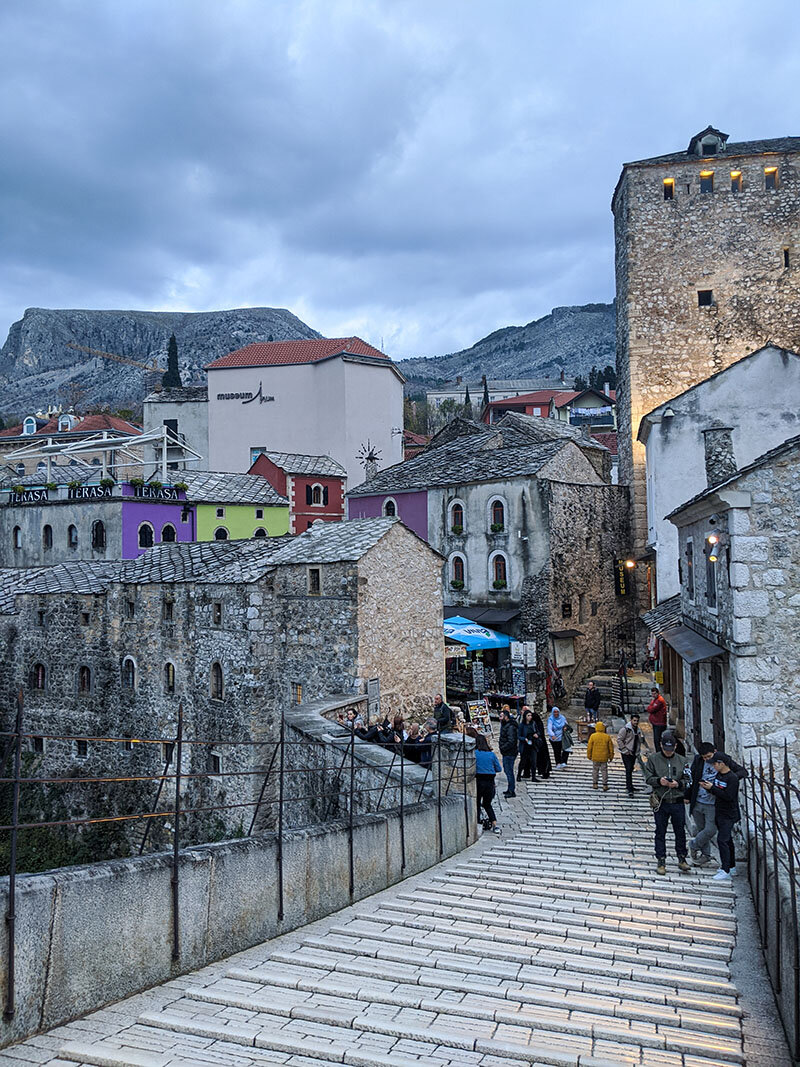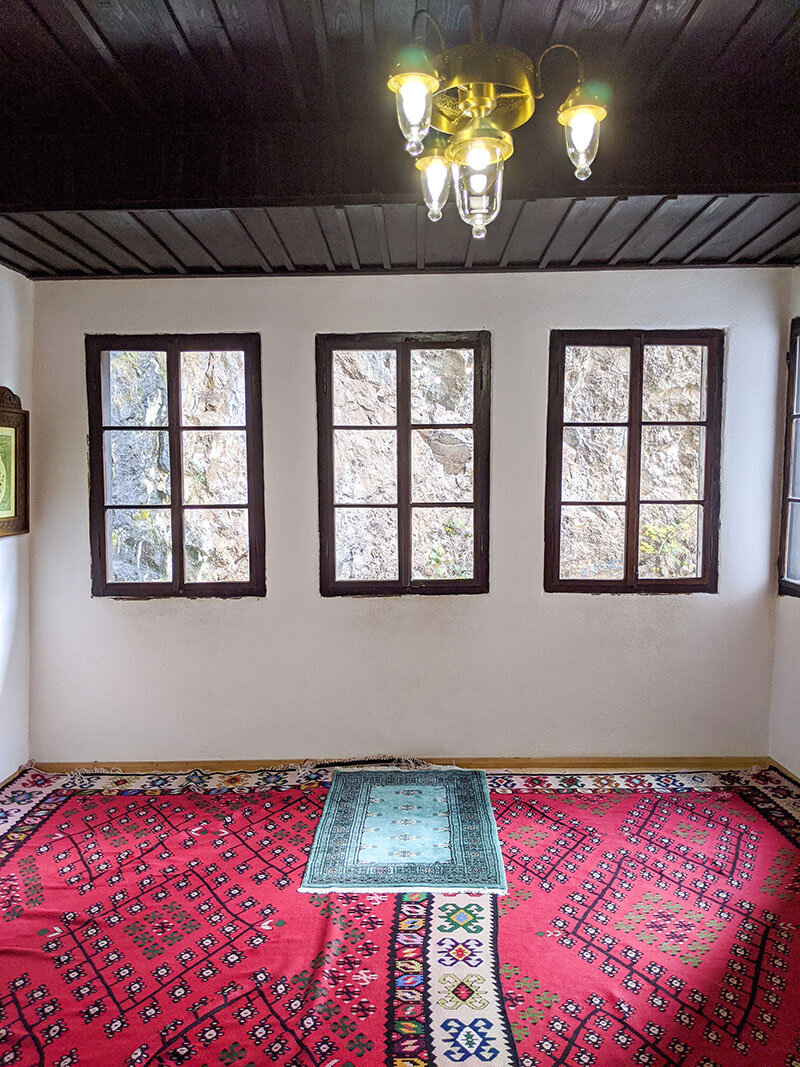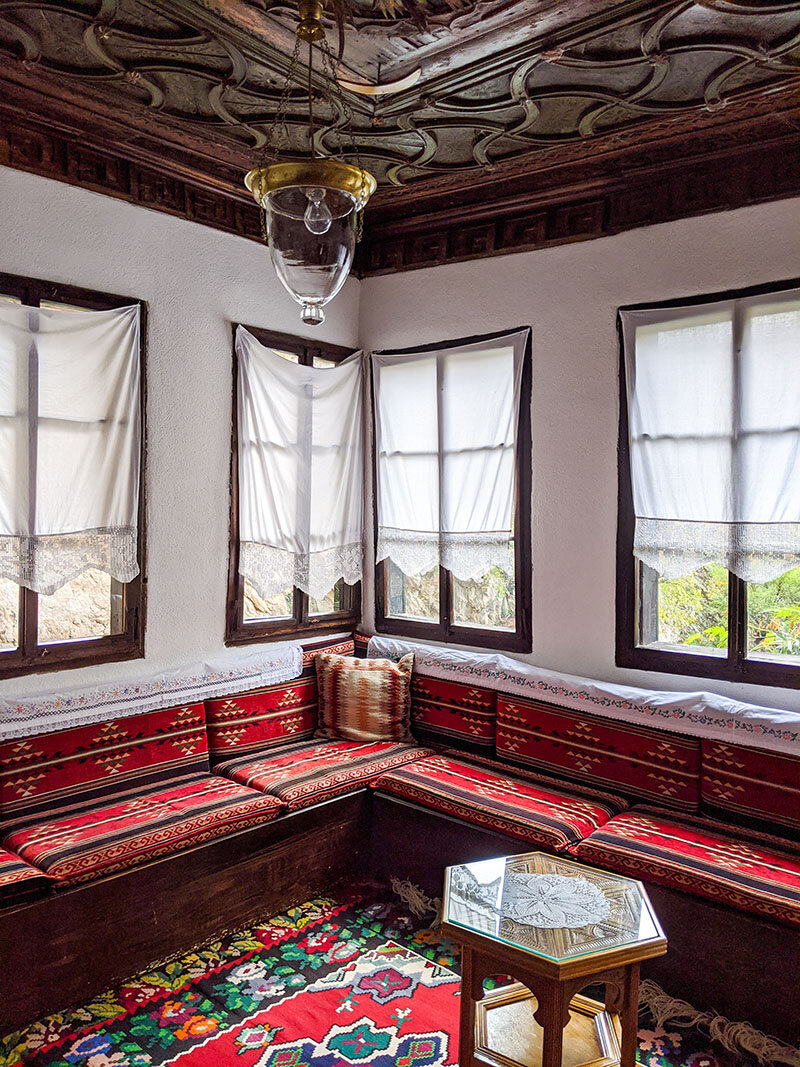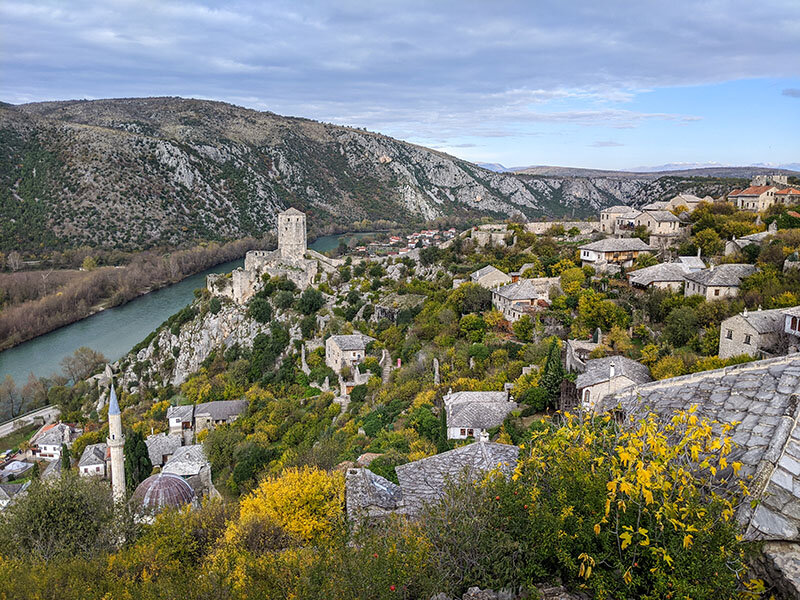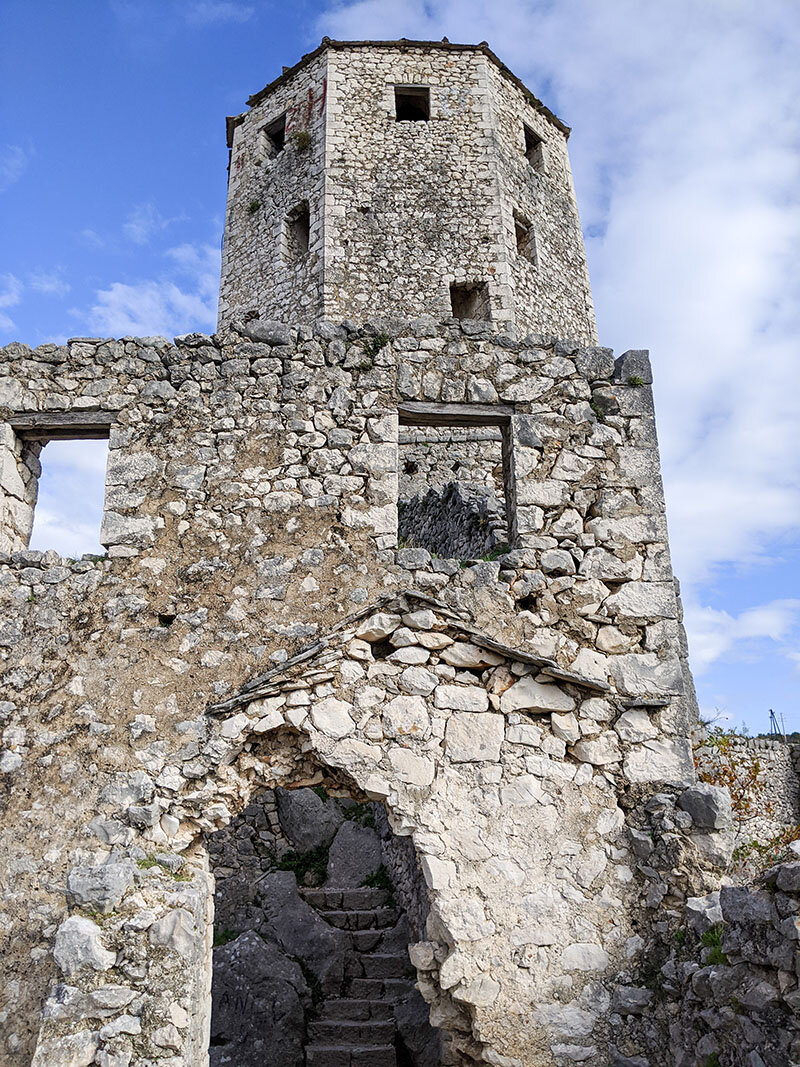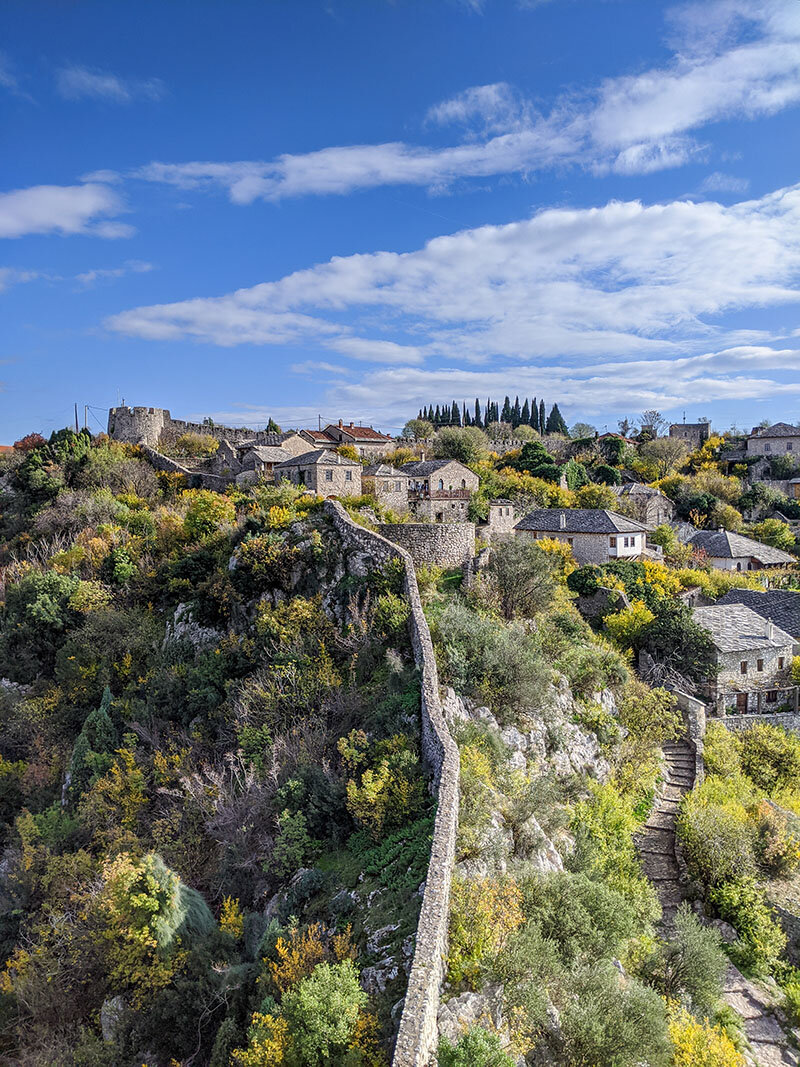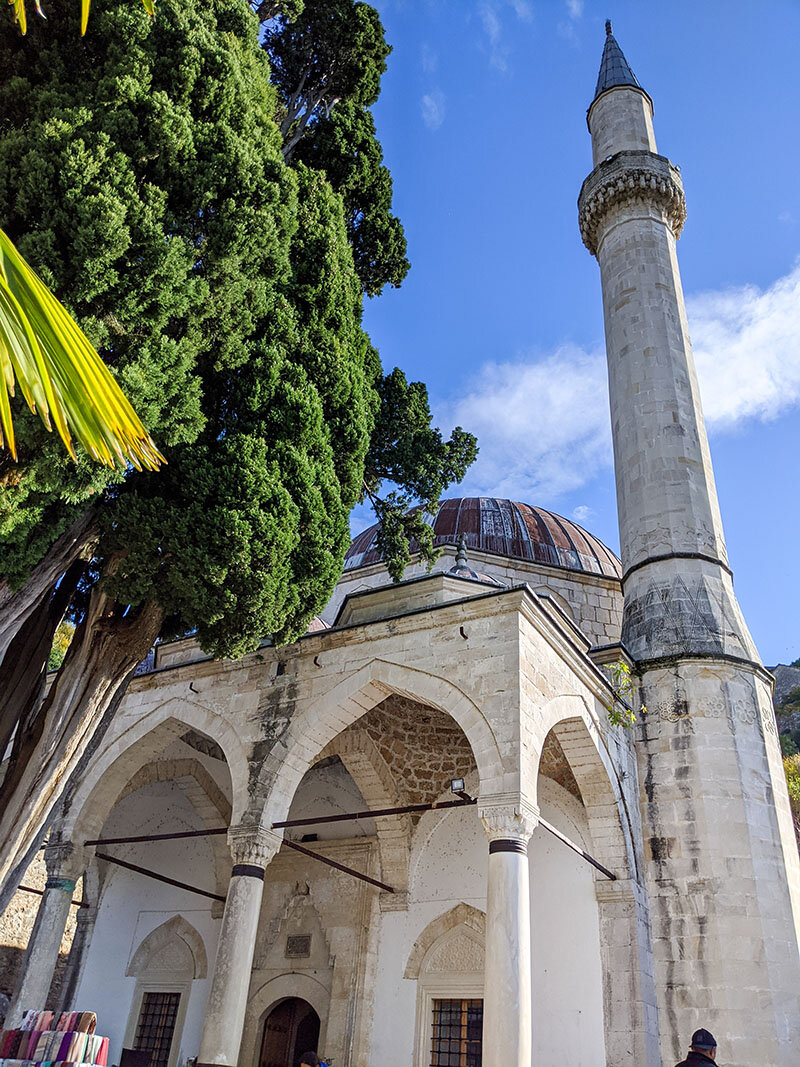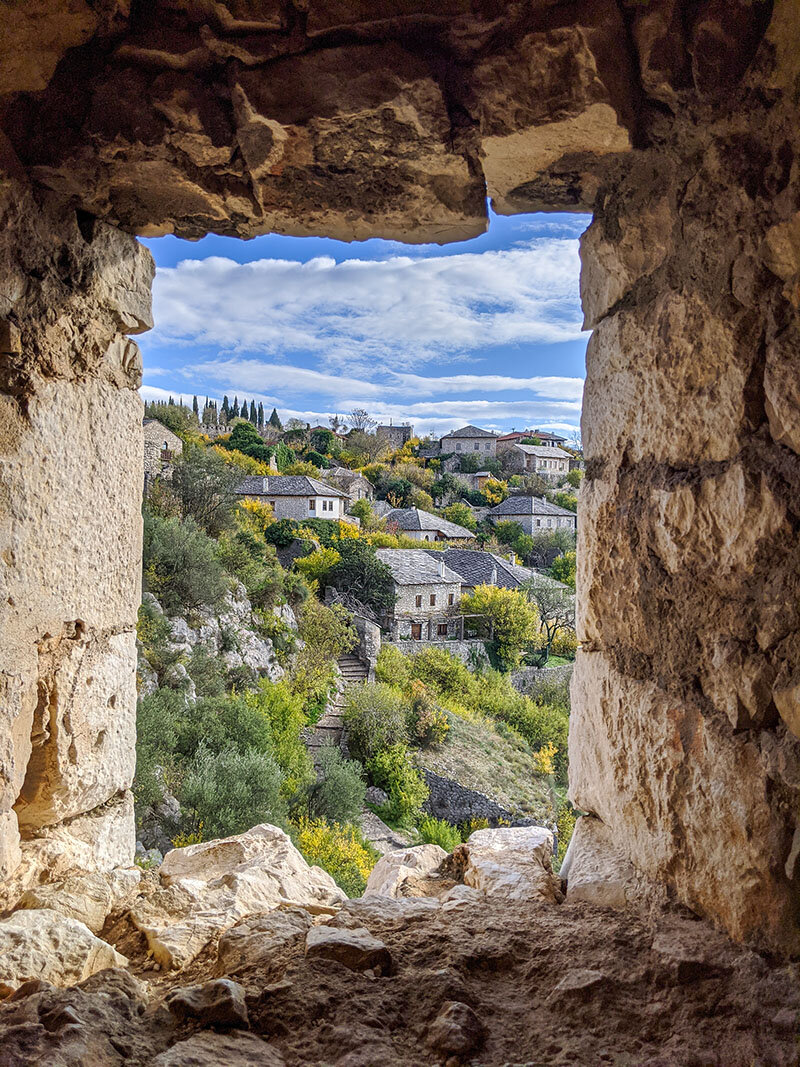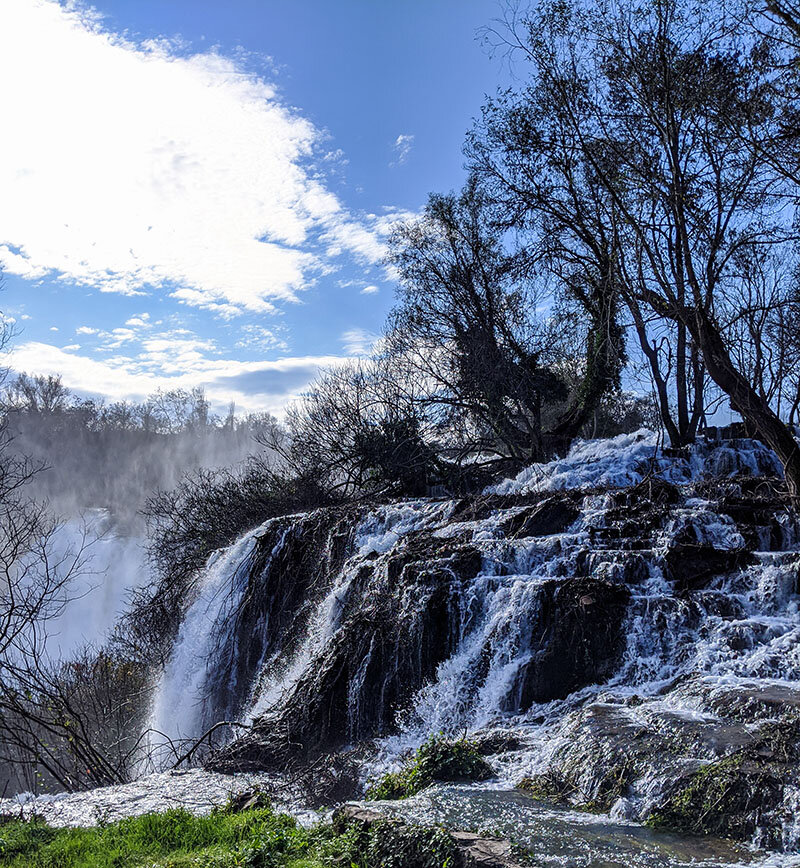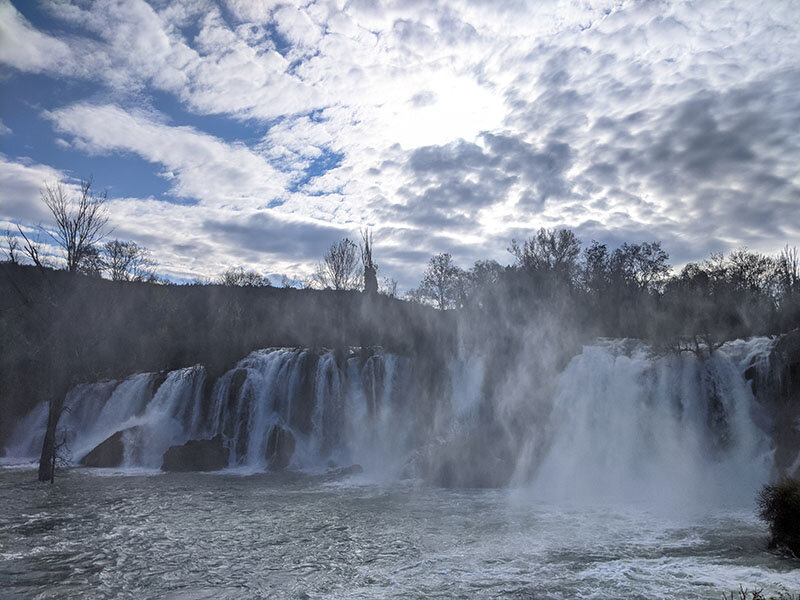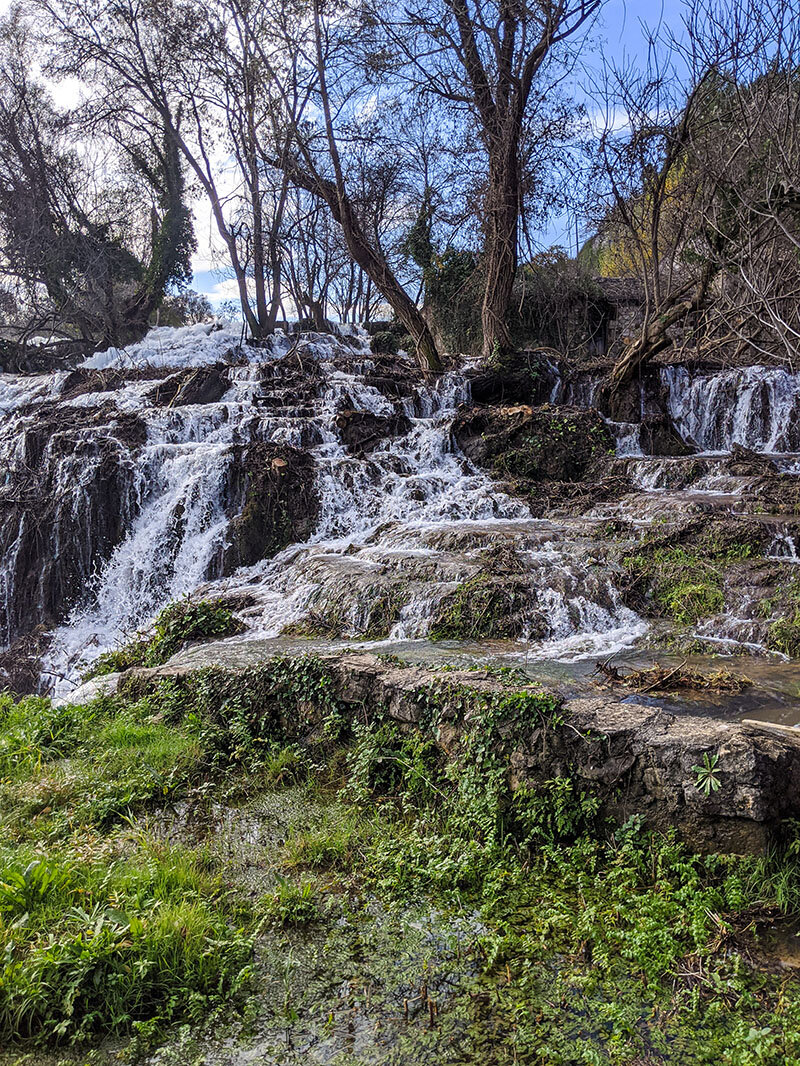Bosnia-Herzegovina was like Poland for me, in that I didn’t know much about the country but quickly realized that it was beautiful and offered many opportunities to learn about the culture and history.
We bused in from Belgrade, traveling through the beautiful mountains and fall forests of Eastern Bosnia. The recent and violent history with Serbia is still apparent, our Belgrade bus took us to the far Southwest side of Sarajevo, which is in the part of Bosnia that still calls itself the Republic of Serbia. We then navigated from there into Sarajevo downtown, where our Airbnb was.
Maybe if you look at this map I pulled off Google it’ll make more sense.
Bosnia has three presidents. The white part of the map is in Bosnia, but they call themselves the Republic of Serbia and they vote for their own president. The gray area in this map votes for the other two Bosnian presidents. As you can imagine, having three Bosnian presidents can lead to a very complicated system where politicians don’t agree on much and can’t get a whole lot done.
SARAJEVO
We stayed in an apartment right next to the Old Town of Sarajevo. The Old Town was very interesting, as it’s split in two, with the East part being very distinctly influenced by the Ottoman empire and the West side being influenced by the Austro-Hungarian empire. The two photos below were taken at the same spot, at the ‘Meeting of the Cultures’ line that divides the Old Town into East and West.
One of the things that quickly stood out to us was how cheap the restaurant food is. We went to the Eastern side to eat cevapi—sausages in a naan-like bread with onions and cream cheese. It was phenomenal. Locals would get glasses of a thick yogurt to drink alongside it.
Other great discovery: Bosnian bakeries had all sorts of sweet treats and meats and cheeses baked into their pastries. We went to these bakeries A LOT. We’ve become big fans of börek/burek, which are pastries made of thick flakey dough in the form of a spiral with spiced beef, chicken, potatoes, or cheese baked inside. We’ve had them all.
We walked through the markets on the East side of the city and indulged in some phenomenal baklava. We had the pistachio and the almond. For those of you who haven’t had it, traditional baklava is layers of sweet dough filled with chopped nuts and held together with a sweet syrup or honey. It’s very gooey and delicious, and you can almost feel the cavities forming-it’s so sweet.
Besides walking around the cobbled streets, taking in the sights of churches, mosques, and synagogues alongside small cafes, street vendors and bakeries, we noticed these large red marks on the ground.
We learned that these are called Sarajevo roses and are a stark reminder to what happened in the city in the 1990s, when the Serbian forces laid siege to Sarajevo. It was the longest siege in modern warfare that lasted for 1,425 days, almost four years. Sarajevo roses were created by mortar shells hitting the ground and filled with red resin, marking the spot where at least 3 people were killed. There are over 200 of these roses in the city.
There was a rose in the street right outside of our apartment, marketing a spot where 43 people were killed. Half a block down, there is a large open air market that has a Sarajevo rose in the middle, marking the deaths of 68 people who were grocery shopping when mortar shells were dropped on them. It was surreal to see the tourists and locals walking over them while on their way to dinner or work.
We took a free walking tour with Spirit Tours, which I’d highly recommend to anyone that visits. We had an awesome guide named Enes. He was so funny and full of information-I could have listened to him all day.
Enes told us Sarajevo used to be called Little Jerusalem or Jerusalem of Europe, because of the mixing of religions and how for centuries Christians, Jews and Muslims lived together in peace in the city.
When WWII was in full swing, the Nazis came to Sarajevo to transport Jews to death camps. They were also looking for a very important Jewish book they knew was in the city, the Sarajevo Haggadah. The book had been assembled in Barcelona around 1350 and transported to Sarajevo when the Jews were expelled from the city in 1492. A rabbi, knowing that the Nazis were after the book, took it to a mosque and asked them to hide it, believing that the Nazis wouldn’t think to search mosques for such an important Jewish text. He was right. The Haggadah survived the Nazi occupation. When the siege commenced in the 1990s, the book was locked away in an underground bank vault and kept safe. Now, it sits in the city National Museum behind a glass door. Ian and I were lucky enough to see it, however we didn’t know what it was at the time.
Sarajevo was also the city in which the Archduke Franz Ferdinand and his wife Sophie were assassinated by a Serbian Black Hand member—the assassination that kicked off the events leading to World War I. The royal couple was traveling by car when Franz Ferdinand asked to be detoured and taken to the local hospital to check on the people that had been injured in a bombing that morning—a bomb that had been meant for him and his wife. As fate would have it, their vehicle stopped right outside a restaurant where Black Hand member Gavrilo Princip was seated, and seeing his opportunity, Princip ran right up to their vehicle and shot them both. There’s a plaque designating the spot, however the original one was taken by the Nazis in WWII and given to Hitler as a present.
We asked our guide Enes what it was like living through the siege as a child—he was 7 years old when the siege started in Sarajevo and 11 by the time it ended. He spoke about almost being killed by snipers and mortars. His parents wouldn’t let him wear red because he’d be too easily seen by the snipers. There were over 11,500 people killed in Sarajevo during the siege, and 1,500 of them were children. This all happened in the 90s! When Spice Girls and the Power Rangers were popular. There were children that were killed by snipers—men who actually had to look at them through a scope and think about what they were doing before they pulled the trigger.
The above pictures are from the Sarajevo Red Line Wikipedia page. They lined up empty chairs for everyone that was killed in Sarajevo during the siege. On the right are small chairs for each murdered child.
Sarajevo hosted the 1984 Winter Olympics, and 10 years later the fields outside the stadiums were covered with grave markers. It’s surreal seeing so many markers with the same years of 1992, 1993, 1994, 1995 repeated over and over again.
The start of the war’s end began when Serbian forces massacred over 8,000 people in and around the village of Srebrenica, a place that the United Nations had said was a safe zone. NATO bombed Serbian forces around the capital of Sarajevo and got them to the table in Dayton, Ohio to sign peace agreements.
We liked our time with Enes so much we booked another tour with him for two days later, this one was called the War Tour and took us a little outside the city. The first place we stopped was the Tunnel Museum. We were able to check out a small part of the tunnel that Bosnians had dug out over the course of four months so that they could transport goods into the city of Sarajevo while under siege. The tunnel started under someone’s house, and there were a few other entrance points in other houses nearby. The tunnel on the mountain side was built out using wooden beams and supports, and the other half of the tunnel built out from the city was using iron from scrapped building and the railways.
We ended the tour above the city, on the old bobsled chutes that are now covered in beautiful graffiti. There are old buildings on the sides of the mountain that used to house nice restaurants in the 80s that are completely shelled out after being used by the Serbians in the siege. When they retreated, they left tens of thousands of landmines surrounding the city. While much of the area around Sarajevo has been de-mined, there are still areas that are deemed off-limits.
MOSTAR
While all that was going on in Sarajevo, in Mostar there was a separate battle between Bosnia and Croatia that was tearing the city apart. Thousands of people died in Mostar, too. There are still people who refuse to cross the bridges to go to the other sides of the city, because one is the Catholic (Croatian) side and the other the Muslim (Bosnian) side. Although the city is firmly in country that we recognize as Bosnia-Herzegovina.
We walked the small cobbled streets of Mostar and found a cafe that we sat at an entire afternoon because we found good company in a Welshman who was living in Germany and two Americans from Detroit, Michigan. We’d all taken the early train out of Sarajevo to Mostar, which was like a dream as we traversed mountains that popped out of clouds that hung low over the rivers and valleys.
We went on a day tour with a Muslim woman who broke all of the molds in our mind of what many of us in the West are led to believe Muslim women are like. She effortless navigated the twisty mountain roads in her nice red car while wearing brand new Nike leggings and CAT boots. She smoked like most everyone in Eastern Europe, told jokes and was an all around great time. She wasn’t married, but had been dating the same guy for seven years and wasn’t in a rush to change things.
On our tour with our new guide friend we went to a 600 year old monastery that was built up against a cave. It was rumored that a man came to the cave and saved a woman from a dragon that lived there and then they built the monastery in his honor. It’s a good story, nonetheless.
After that we drove down to the medieval city of Pocitelj and walked around the fortress ruins, getting amazing views of the village on the hill, the watch towers, an old clock tower and a mosque.
From there we went to the Kravice waterfalls. They were raging—it’d been raining a lot recently and they were out of their banks. We were told there are eels in the river and told an unsettling story about how they could drop on you when you hang out under the waterfalls.
That night we went out to eat and had a good meal, ordering the “National Plate” to split so we could eat all the traditional goodies. Stuffed grape leaves, stuffed onions and peppers, more cevapi, veggies and rice.
The next day we had some issues with the bus in the morning, but we got another bus booked from the other side of town and were soon headed on our way to Zadar! To check out more of our pictures from Bosnia, head on over to our Photos page.
